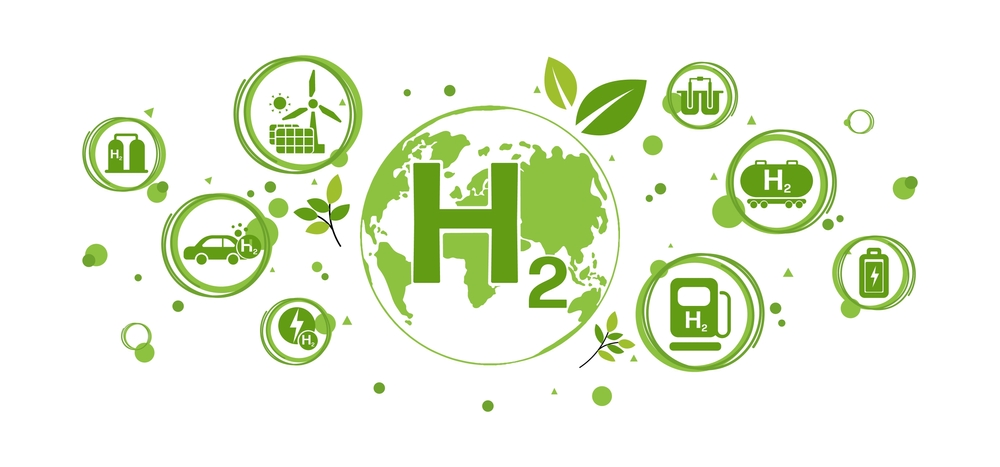Canada is on the verge of an energy revolution. While much of the global focus has been on renewable energy sources like solar and wind, Canada is now placing a massive bet on clean hydrogen as the future of sustainable energy. With vast natural resources and a commitment to green innovation, Canada is in a unique position to be a leader in this emerging industry. But what does Canada’s Clean Hydrogen Strategy mean? What opportunities does it hold? And what challenges must we overcome to ensure its success? Let’s dive into the details.
What is Clean Hydrogen?
Before we explore the strategy and its implications, let’s first understand what “clean hydrogen” actually is. Hydrogen is the most abundant element in the universe, and when used as a fuel, it produces zero emissions. Clean hydrogen refers to the production of hydrogen without generating carbon dioxide (CO2) or other pollutants. It’s produced using renewable energy sources like wind, solar, or hydropower, rather than fossil fuels.
Clean hydrogen can be used across several sectors, including transportation, industrial applications, and electricity generation, offering a carbon-free energy source that is essential for tackling climate change. And Canada’s vast natural resources—especially our hydropower and wind energy—make it an ideal place to produce this revolutionary fuel.
The Canadian Hydrogen Strategy: A National Commitment
In December 2020, the Canadian government released its Hydrogen Strategy for Canada, a bold roadmap to make Canada a global leader in hydrogen production and use. The strategy outlines several key objectives, including:
- Scaling up hydrogen production from clean energy sources.
- Developing hydrogen infrastructure, such as storage, transport, and distribution systems.
- Supporting innovation and research into hydrogen technologies.
- Fostering international partnerships to expand the market for Canadian hydrogen.
The government’s investment in clean hydrogen is part of its broader commitment to achieving net-zero emissions by 2050. In fact, Canada aims to become one of the world’s largest exporters of clean hydrogen by 2030, capitalizing on its natural resources and technological expertise.
Investment in Clean Hydrogen
In 2025, Canada is set to make significant strides with a growing number of initiatives, including investments in clean hydrogen infrastructure and technology. For example, the Hydrogen Strategy for Canada includes investments of C$1.5 billion in the development of clean hydrogen infrastructure, including hydrogen fueling stations, production facilities, and storage solutions (source).
Opportunities for Canada
Canada’s Clean Hydrogen Strategy presents exciting opportunities across a range of industries, both domestically and internationally.
1. Exporting Clean Hydrogen to Global Markets
One of the most exciting opportunities for Canada is the potential to become a major exporter of clean hydrogen. With countries around the world looking to decarbonize their energy sectors, clean hydrogen is becoming an increasingly sought-after commodity.
Canada’s existing energy infrastructure—such as pipelines and port access—positions the country as a prime candidate to supply clean hydrogen to international markets. Countries like Japan, South Korea, and Germany are actively seeking reliable hydrogen suppliers to meet their own climate goals, and Canada is well-placed to meet that demand.
Additionally, Canada’s commitment to using hydropower and wind energy to produce clean hydrogen offers a competitive advantage over other countries. The combination of Canada’s vast renewable energy resources and its world-class technology makes it an ideal supplier for clean hydrogen to the world’s most advanced economies.
2. Decarbonizing Key Industries
One of the main benefits of clean hydrogen is its ability to decarbonize sectors that are difficult to electrify, such as heavy industry and transportation. Industries like steel production, chemical manufacturing, and oil and gas refining are some of the largest emitters of greenhouse gases globally, but they are also critical to the economy. Hydrogen can play a pivotal role in helping these industries reduce their carbon footprint.
In Canada, several pilot projects are already underway to explore how clean hydrogen can replace fossil fuels in industrial processes. For example, in Alberta, the H2Source initiative is working on producing hydrogen from natural gas with carbon capture technology to reduce emissions from the oil sands industry (source).
Moreover, hydrogen-powered electric vehicles (EVs) are also emerging as a viable alternative to battery-powered EVs, particularly for heavy-duty transportation like buses, trucks, and trains. As Canada continues to invest in hydrogen infrastructure, this could become a game-changer for transportation emissions.
3. Job Creation and Economic Growth
Canada’s hydrogen economy presents a major opportunity for job creation and economic growth. The strategy will require significant investments in manufacturing, research and development, construction, and operations. In addition to creating jobs in the hydrogen sector itself, it will also boost jobs in related fields such as engineering, data science, and logistics.
The Canadian hydrogen sector has the potential to generate thousands of new jobs in clean energy industries, helping to drive economic recovery and growth. With governments at the provincial and federal levels investing in the hydrogen economy, this is an opportunity for Canada to lead in the green energy transition and become a beacon for the global economy.
Challenges to Overcome
While the potential for Canada’s Clean Hydrogen Strategy is vast, there are several challenges to overcome before the hydrogen economy can become a reality.
1. High Production Costs
The biggest challenge facing clean hydrogen is its cost. Green hydrogen—hydrogen produced using renewable energy—remains expensive compared to grey hydrogen, which is produced from natural gas using traditional methods. This price gap makes it difficult for clean hydrogen to compete in the market, especially when oil and gas prices fluctuate.
Canada will need to invest in scaling up production and innovative technologies to lower the cost of clean hydrogen. For instance, advancements in electrolysis (a method of splitting water into hydrogen and oxygen using electricity) and carbon capture technology will be essential to making clean hydrogen more affordable.
2. Infrastructure Development
To realize the full potential of clean hydrogen, Canada will need to build a robust infrastructure for production, storage, and transportation. Hydrogen requires specialized storage tanks and high-pressure pipelines, which can be costly to implement.
Canada is already making strides with its hydrogen fueling stations and pipeline projects, but more investment is needed in infrastructure to ensure that hydrogen can be transported and delivered efficiently across the country and to international markets.
3. Policy and Regulatory Challenges
In addition to technological and infrastructure hurdles, the hydrogen economy will also face policy and regulatory challenges. Governments at both the provincial and federal levels will need to work together to create a coherent regulatory framework that supports the growth of the hydrogen sector while ensuring safety and environmental responsibility.
For example, there will need to be standards for hydrogen storage, transportation, and safety. Governments must also ensure that the production of hydrogen is genuinely clean, with no unintended environmental consequences.
Conclusion: Canada’s Hydrogen Future
Canada’s Clean Hydrogen Strategy is an exciting step forward in the fight against climate change and the transition to a sustainable energy future. With vast natural resources, cutting-edge technology, and a forward-thinking government, Canada is well-positioned to become a global leader in clean hydrogen production.
However, the road ahead will require significant investments, overcoming technological challenges, and creating the necessary infrastructure to support the hydrogen economy. If Canada can rise to meet these challenges, the hydrogen revolution could be one of the most exciting and impactful developments in the country’s energy landscape in the coming decades.









